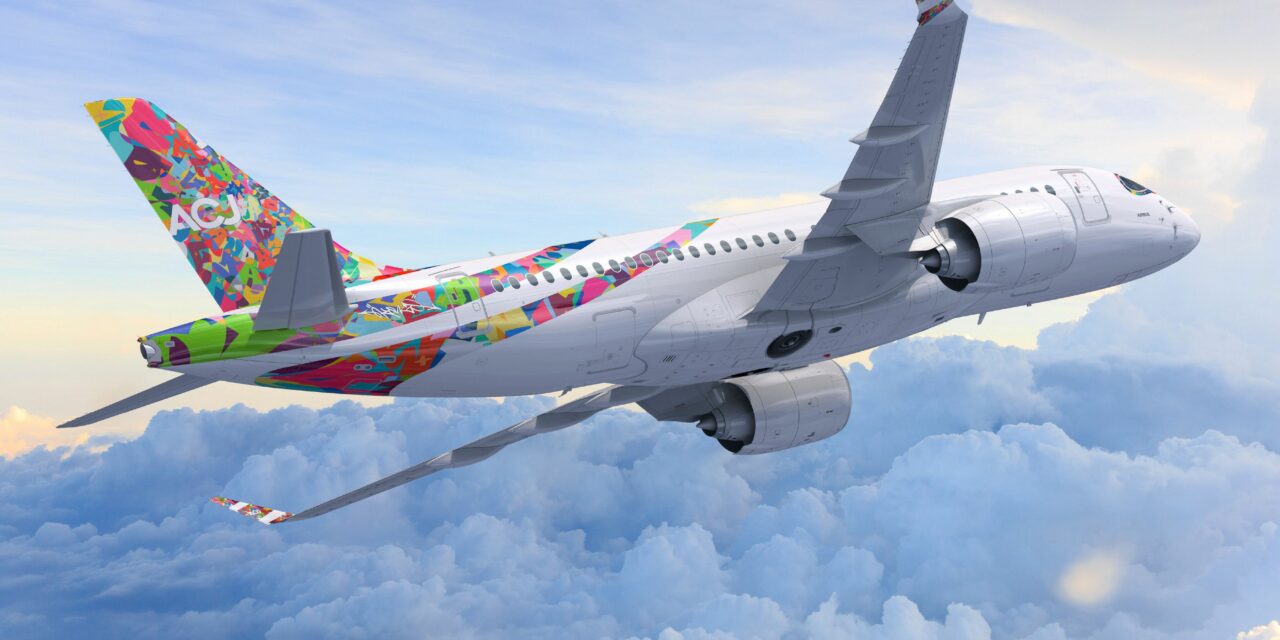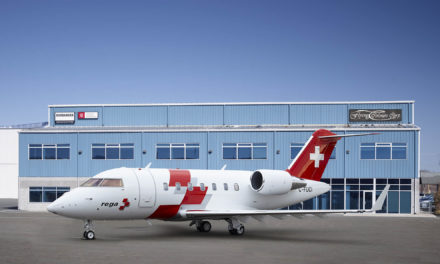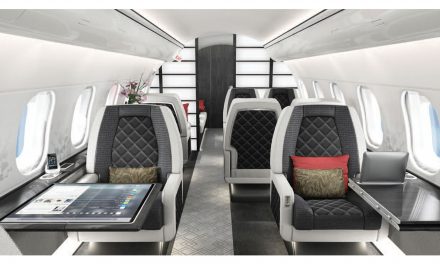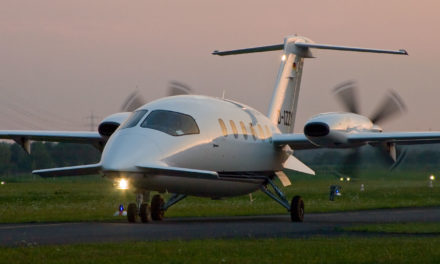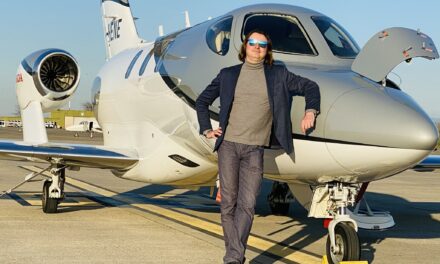By Fred Vergnères
Launched in October 2020, the ACJ TwoTwenty has become the spearhead of the European aircraft manufacturer’s “corporate jets” range in less than a year. In addition to attracting the curiosity and enthusiasm of many owners, the concept has brought in its wake a burst of creativity that has not gone unnoticed.
Thanks to the work of Sylvain Mariat and his design team at Airbus Corporate Jets (ACJ), the ACJ TwoTwenty’s 73-square-meter cabin remains the ideal “playground” for any artist worth his or her salt, regardless of the art involved. Even more so when its worldwide fame transforms this space into a unique showcase, the simple aircraft is transformed into an exceptional art gallery.
Cyril Kongo, for example, has transformed this innovative concept from a simple spray of paint into a unique and precious street art canvas. The Airbus teams, headed by Sylvain Mariat, have bet on this art form, which is sometimes disparaged but whose graphic reflection has been imprinted in the heart of our societies for several decades.
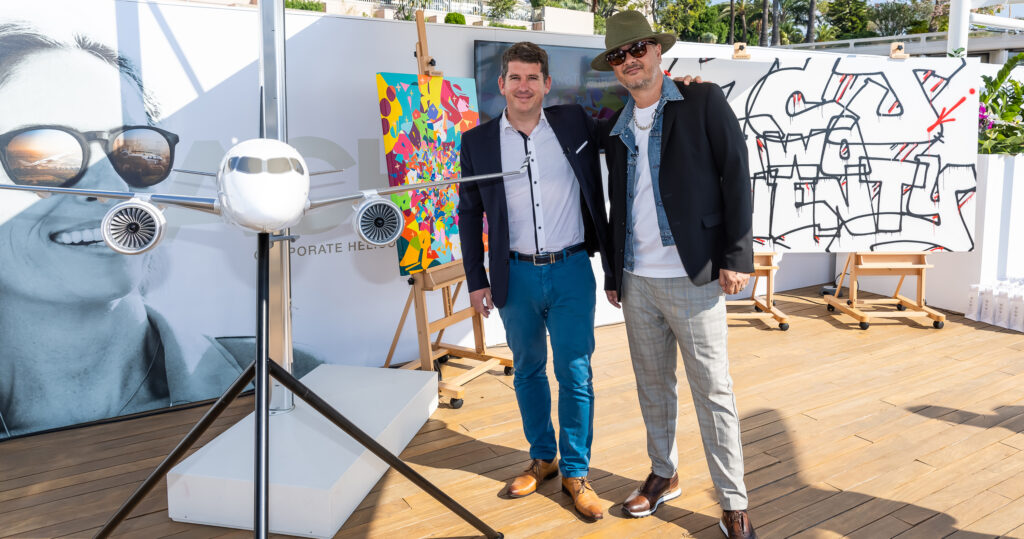
Dedication
And the choice of Cyril Kongo is not innocent. His fame first of all, that he has acquired over the years as well as the recognition of his talent. These graffiti, that he elevated to the rank of art, helped him create Kosmopolite in 2002, the first international festival of graffiti in order to dissociate the art of the “Tag” from its connotation of urban vandalism. With strength of conviction and talent, Cyril Kongo imposed his art allowing it to be recognized through numerous partnerships with major luxury houses such as Hermès or the crystal maker Daum. The street art opened to the largest number in France but also internationally. Graffiti, the symbol of the street par excellence, questioned and challenged the artistic “establishment“; and found its place in art galleries. The contemporary impact of this typography, sanctified by Cyril Kongo would even go so far as to be housed in 2018 in the heart of the Chanel fashion show at the Metropolitan Museum of Art in New York under the benevolent eye of Karl Lagerfeld. A dedication.
But in addition to his art, it is also the human side of the artist that ACJ called upon as Sylvain Mariat evokes: « We have already made partnerships in the past, and they have always begun with a human story, a strength of relationship. This is the most important trigger for a project. There was obviously an internal process to validate this partnership, but we wanted to work with Cyril, not only for the artistic recognition of his work, but also and above all for his human qualities. It would have been difficult for us to work with an artist without this guiding principle. »
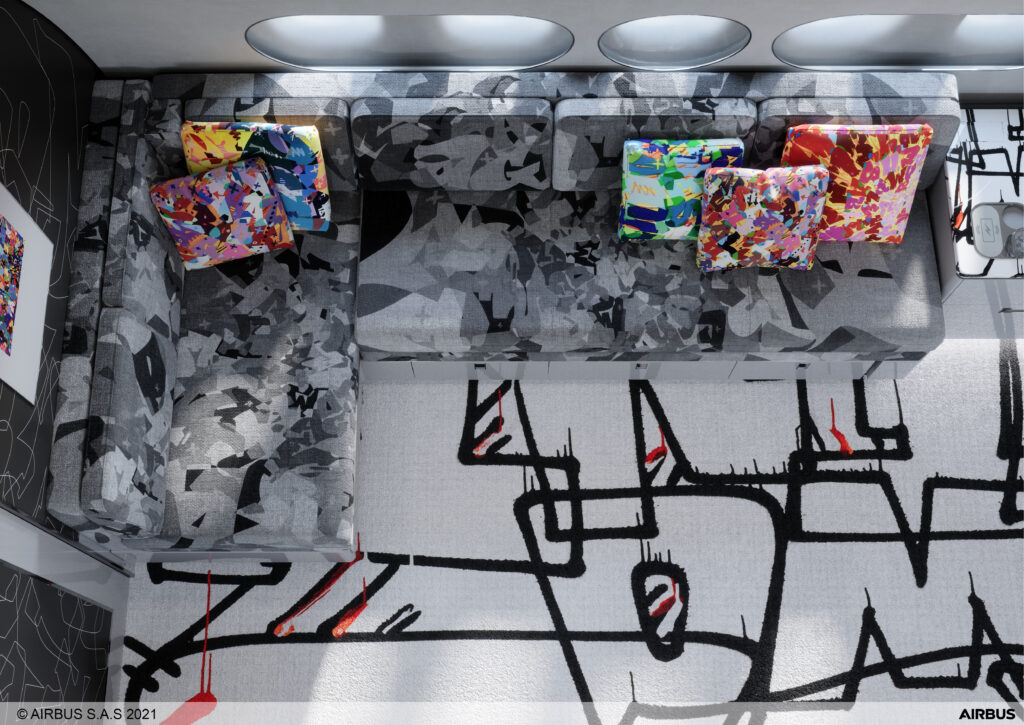
Human and graphic adventure
Although the alliance between the Frenchman’s graphic work and ACJ does not seem obvious at first glance, on closer inspection, it appears to be based on connections and complementarities. In retrospect, the connection with Sylvain Mariat, is an obvious choice, stressing even more the contemporary and innovative line of ACJ’ chief designer. Sylvain Mariat underlines that Cyril Kongo’s art « seemed so far from my universe ». Before adding: “The first exchanges allowed us to discover our respective worlds. And very quickly the ideas were set up to finally understand that, our common desires, my work and his art marry in all complementarity, such an obviousness “. For Cyril Kongo, in addition to the complementarity, this project was at first experienced as a challenge to his art: « How to keep my graphic identity while inserting it in Sylvain’s design, without distorting the elegance of the cabin? The idea was to tame the space, to play with the different surfaces presented without giving an impression of heaviness and discrepancy between my work and this 73 -m2 space. It was really a huge challenge. »
Further to this natural osmosis, it was necessary to structure the idea in order to manufacture the concept, with the necessary prerequisites. The intangible marker of this human and graphic “adventure” was balance, which made it possible to break down the cabin design while integrating the DNA of Cyril Kongo’s work without distorting the initial idea. The Comlux teams, designated cabin outfitter for the first 15 aircraft in Indianapolis, played the role of guide, advisor and support to the artist. They had the difficult task of defining the field of possibilities or incompatibilities, as Mariat points out: « It was necessary to study with Comlux the feasibility of the concept, from a point of view of the development as well as for the manufacture of the elements composed of the “cartridges” imagined by Cyril Kongo. »
The industrial articulation with an artistic source is always a challenge. In the case of this concept, ACJ’s design team worked closely with Comlux‘s teams in order to agree, ‘in fine’ with the engineers, on the processes to be put in place in order to find the perfect compromise between efficiency, quality and respect for the work.
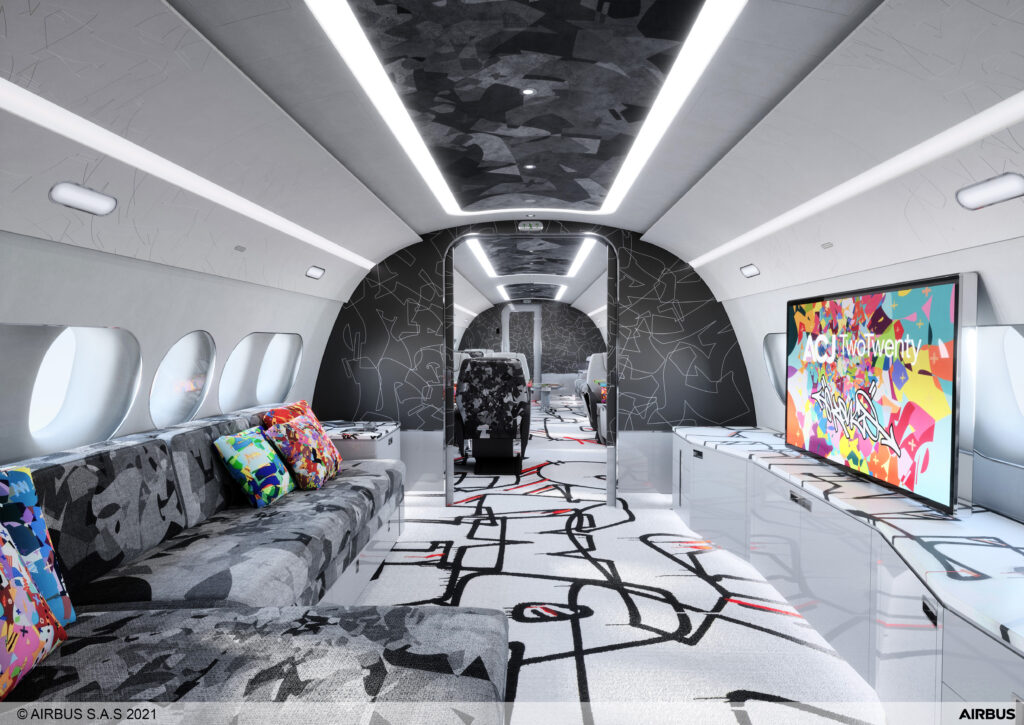
Art gallery
To create this unique interior, generating a visually comfortable atmosphere in a concept that is nonetheless totally disruptive, the artist proposed three distinct works, one of which is « very wired, very graphic, allowing us to play with the shades, and a second with an opening on a white background perfect for the carpet and the top of the credenzas, » says Kongo, before adding, « Sylvain saw and knew how to integrate them into his universe and move them through the elements, panels, furniture and on the different materials, all the while taking into account the luminosity of each space. An exciting job because it is totally different from the one I do in my studio. For this work, the artist was inspired by the writing of these paintings and also by his passion for Saint Exupéry. His “link between his world and aviation … » he said. And even if he has a preference for the poet more than the pilot, the artist was totally transported by this journey into the world of aviation to transpose his art as faithfully as possible on all elements of the cabin from the floor to the walls through the fabrics. We find the caricatured writings on the belts and the damask on the leather of the armchairs in order to make each detail in perfect coherence with the universe and the atmosphere initially created by Sylvain Mariat. But more than just an ephemeral concept, the partnership with the artist has highlighted the hyper-personalization of each cabin. If the artistic concept presented to the press during the last Monaco Yacht Show, is mainly centered on the ACJ universe (and thus those acronym letters), the design manager and the artist insist on the realization of unique works personalized for each owner. « The three works will be made according to the personality and desiderata of the client, »emphasizes Kongo. In fact, the artist will go to meet the buyer in order to interpret the desires of the latter and to realize a model dressed with unique and personalized pieces. This concept, unique in its kind in the world of aeronautical interior design, is already a small revolution. It can be compared to a masterpiece and a flying art gallery that could revolutionize the small world of art; and that of quotation…
The fact remains that the exhibition of such a work could not be satisfied with an interior, as imposing in terms of surface as it is. Cyril Kongo has therefore accompanied the construction of its graphic identity to the exterior of the aircraft. The livery was unveiled last October during the NBAA (National Business Aviation Association) show in Las Vegas. While the new livery breaks with the “aging” color codes of the business aviation world without upsetting its fundamentals, the scheme chosen and its contemporary spirit link the two worlds, artistic and aeronautical. A wink from Cyril Kongo 46 years later to Calder, the first artist to paint a work on an airliner for Branniff International Airways. Without a doubt, another consecration.

